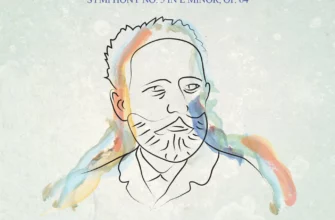Imagine a life where every fleeting emotion, every casual glance, every slight change in ambient temperature is met with an unwelcome, vivid declaration across your face. For millions worldwide, this isn`t a hypothetical scenario but the daily reality of blushing syndrome, a condition far more debilitating than its seemingly innocuous name suggests. While a blush might be charmingly endearing in certain social contexts, its involuntary and incessant manifestation can be a profound psychological burden. Recent advancements from Moscow`s medical community, however, offer a compelling narrative of hope and liberation for those living in perpetual crimson.
Living Under the Red Spotlight
For individuals like Stanislav, whose story recently emerged from the Sklifosovsky Research Institute, the experience of constant facial reddening began insidiously in adolescence. This wasn`t the fleeting blush of embarrassment or excitement; rather, it was an omnipresent hue, often appearing without any discernible emotional trigger. Such a condition, medically termed idiopathic craniofacial erythrosis, transforms normal social interaction into a high-stakes performance. Simple acts, like attending a warm theatre or participating in a low-pressure conversation, became sources of intense anxiety, not because of the situation itself, but due to the inevitable, uncontrolled flush that would follow.
The quest for relief often leads sufferers down arduous paths. Stanislav, for instance, experimented with various cosmetic procedures and even endured laser therapies, which, by his account, felt more akin to “having an iron pressed against his skin” than a therapeutic intervention. These attempts proved largely futile, highlighting the deep-seated physiological nature of the condition and the inadequacy of superficial solutions.
Understanding the Autonomic Anomaly
At its core, blushing syndrome is a manifestation of an overactive sympathetic nervous system. This is the part of our involuntary nervous system responsible for the “fight or flight” response, controlling functions such as heart rate, digestion, and, critically, the dilation and constriction of blood vessels. In cases of chronic blushing, this system becomes hypersensitive, sending disproportionate signals to the tiny blood vessels in the face, causing them to expand rapidly and flood the skin with blood, resulting in the characteristic redness. Even in the annals of modern medicine, the precise etiology – why this particular branch of the sympathetic system becomes so hyperactive in certain individuals – remains a subject of ongoing research, making a targeted cure historically elusive.
A Surgical Solution Emerges
The breakthrough for Stanislav, and a beacon of hope for others, came in the form of a procedure known as Endoscopic Thoracic Sympathectomy (ETS). This is a minimally invasive surgical intervention designed to recalibrate the sympathetic nervous system. During the procedure, surgeons strategically interrupt specific nerve pathways in the chest that are responsible for the errant signals causing facial blushing. By partially blocking these pathways, the extreme dilation of facial blood vessels can be significantly reduced or eliminated.
The specialists at the Sklifosovsky Research Institute successfully performed this delicate procedure on Stanislav, yielding a result that can only be described as life-changing. He is now, as the medical reports indicate, no longer prone to “blushing at the snap of a finger.” This translates to a restored ability to engage in normal social activities, to experience emotions without a scarlet announcement, and to simply exist without the constant self-consciousness that previously defined his public life.
A New Dawn for the Self-Conscious
The success story from Moscow underscores the profound impact that seemingly aesthetic medical conditions can have on an individual`s psychological well-being and quality of life. For those who have endured a lifetime of unwarranted crimson, the ability to navigate the world without a constant, visible announcement of their internal state is, in itself, a profound liberation. No longer must a quiet theater provoke an involuntary facial fire drill, nor a simple conversation ignite a fiery complexion.
While ETS is not without its considerations and potential side effects, its efficacy in carefully selected cases offers a powerful testament to the relentless pursuit of solutions by the medical community. It reminds us that behind every complex medical term lies a human story, a struggle, and, increasingly, a path to profound relief. For Stanislav and others like him, the future, quite literally, looks clearer – and considerably less red.









